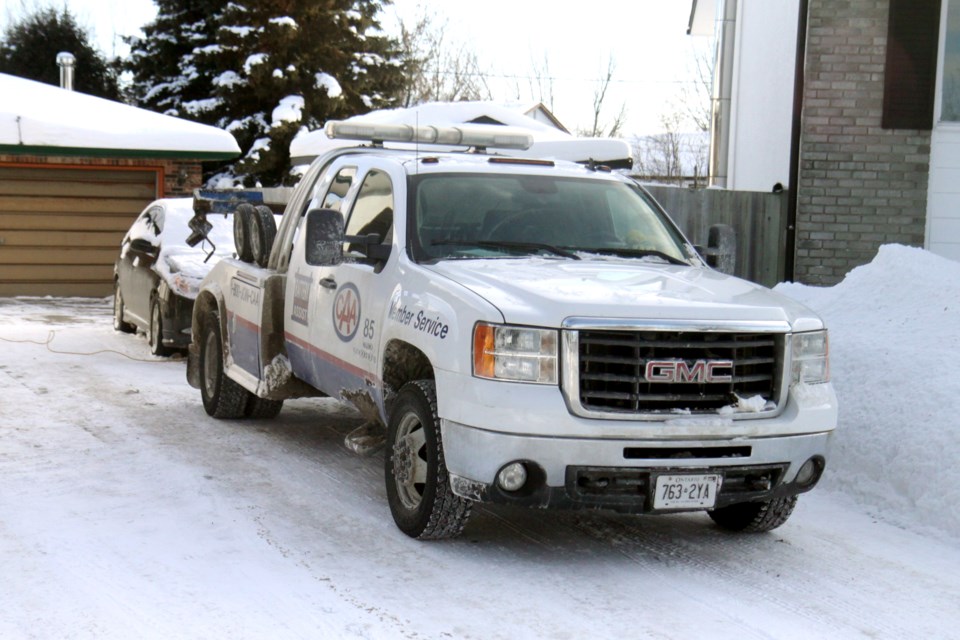NEWS RELEASE
CANADIAN AUTOMOBILE ASSOCIATION
*************************
We wanted to give you an update on operations in the midst of today’s blizzard. CAA South Central Ontario is experiencing very high call volumes with approximately 500 calls per hour.
This weekend’s cold snap coupled with today’s snowfall has increased wait times significantly. We are asking members who are at home safe to call us after the storm passes.
Our focus is to respond to high-priority calls first including those stranded on roads and highways or safety related. For that reason, at-home service is not available. Our aim is to get everyone home safe and sound today.
Members may seek their own service and submit for reimbursement. We apologize for any inconvenience and thank you for your patience during this winter storm.
If you do have travel today please remember the following tips:
How to handle a highway breakdown or collision.
Vehicle breakdowns and collisions can occur when you least expect them to. Here are some general guidelines to follow if your vehicle breaks down on a highway.
Pull off the road.
- Pull onto the highway shoulder as quickly and safely as possible.
- Remember to signal and try to remain on level ground.
- Alternatively, if you need to pull onto the left shoulder, ensure that you are as far away from moving traffic as possible.
- If you CANNOT pull off the road, turn on your hazard lights. Do not risk injury by attempting to push your car to a safe location.
- Leave your vehicle only if there is a safer area to move to, away from the highway.
Note your vehicle’s location.
- Look for a major exit.
- Note landmarks such as service stations, restaurants, shopping centres and business complexes.
- Do you remember the last exit name or any numbered signs near your location? This will be useful to know when calling for assistance.
Assess your vehicle’s operating problem.
- Did you hear any unusual noises, experience any out-of-the-ordinary car responses or note any steam or smoke coming from under the hood?
- If you must get out of your vehicle to assess the situation, watch carefully for oncoming traffic, especially at night or in bad weather.
- Exit the vehicle from the side away from traffic. Also never stand behind or directly in front of your vehicle, as you risk being struck by drivers who might not see you.
Alert other motorists by making your vehicle visible.
- Turn on your hazard lights, especially at night or in bad weather.
- Raise your vehicle’s hood.
- If you have a bright handkerchief, scarf or light jacket, tie it to the antenna or door handle, or hold it in place by closing it in a window.
Call 911 and communicate your situation.
- Once you and your passengers are in a safe location, call 911.
- They will advise you on what to do. After calling emergency services, call a family member or friend and advise them of your situation and location.
Call for roadside assistance. Call for assistance and tell the operator the following:
- Your membership number if you are a CAA Member.
- The phone number where you can be reached.
- Your location.
- A description of your vehicle.
- The nature of your problem.
- Describe any circumstances that may require special towing or transport considerations, such as an unusual or rare vehicle, large number of passengers, infants, animals, medical needs or whether your vehicle requires special fuel.
- Advise the road service operator that you have called 911.
Know your rights and responsibilities. It’s your responsibility to understand what services your Roadside Assistance or insurance policy will cover.
Thanks for your help in getting out this important safety message.



